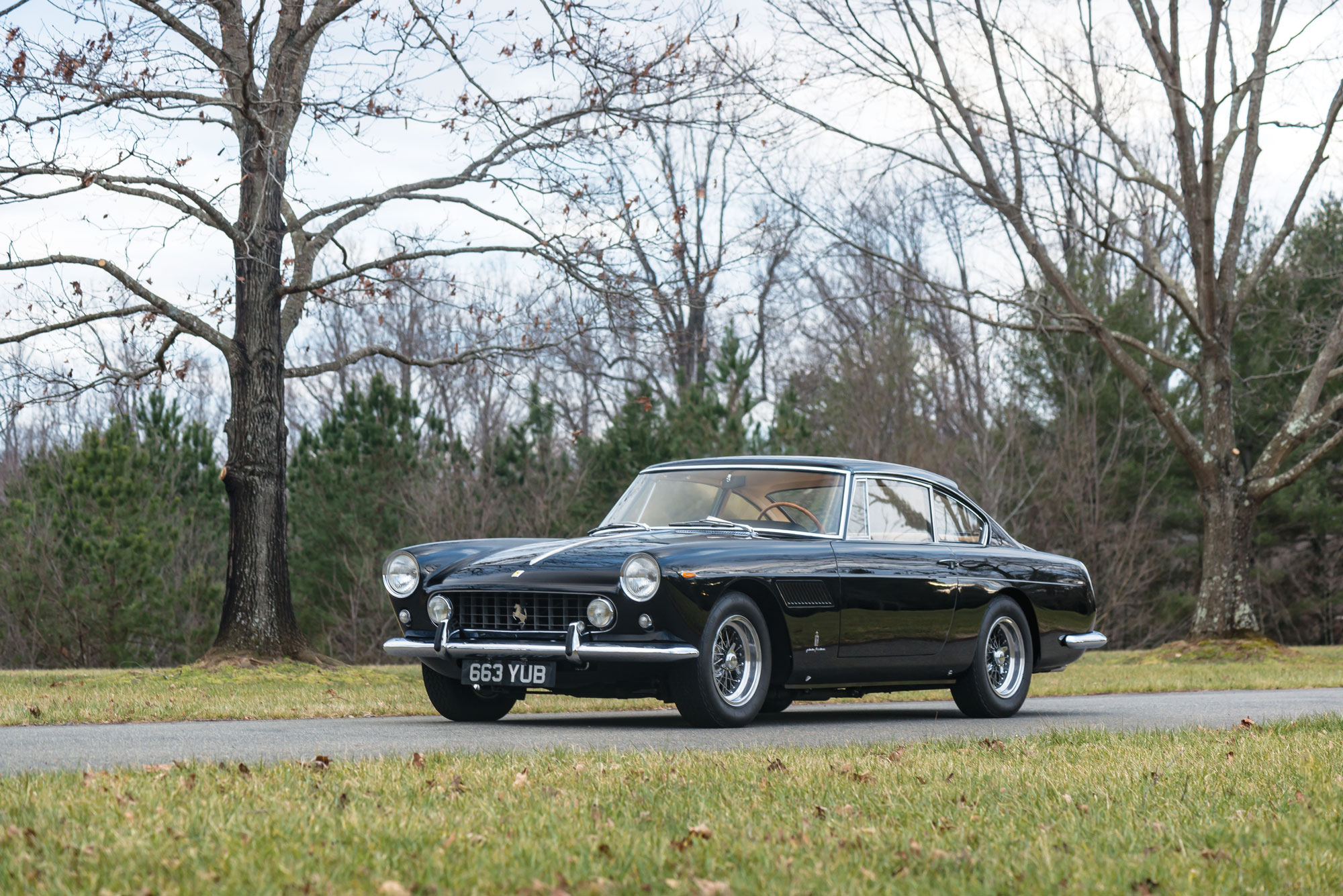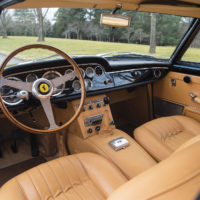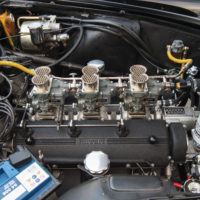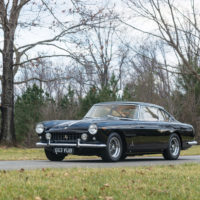SCM Analysis
Detailing
| Vehicle: | 1962 Ferrari 250 GTE 2+2 Series II |
| Years Produced: | 1960–63 |
| Number Produced: | 957 |
| SCM Valuation: | $448,000 |
| Tune Up Cost: | $3,500 |
| Chassis Number Location: | Left frame member by steering box |
| Engine Number Location: | Passenger’s side of engine block near bellhousing |
| Club Info: | Ferrari Club of America |
| Website: | http://www.ferrariclubofamerica.org |
| Alternatives: | 1963–68 Ferrari 330 GT 2+2, 1966–68 Lamborghini 400GT 2+2, 1958–62 Aston Martin DB4 |
| Investment Grade: | C |
This car, Lot 247, sold for $682,000, including buyer’s premium, at RM Sotheby’s Online Only: Open Roads sale on February 28, 2021.
American families evolved to multiple-car ownership during the 1950s. Women who entered the workforce during World War II were more prone to continue working outside the home after the war, which necessitated the ownership of a second vehicle. Post-war prosperity in the U.S. meant there was more money available for the purchase.
Across the pond, however, things were a little different. Even if there was a need and finances for a second car, a scarcity of real estate meant parking for more than one car was often expensive or nonexistent. This means European cars needed to be more versatile, often performing more than one task.
Such a dichotomy still holds today: Recent statistics show Americans own 0.84 cars per person while Italians have 0.66. In the U.K., the numbers drop to 0.47.
Ferrari’s first 4-seater
With Europe’s post-war recovery fading into history, Enzo Ferrari was looking to expand his production-car business in the late 1950s. Many potential clients were able to purchase a Ferrari but wanted a car with more utility than a 2-seater. The idea of a grand-touring car that could be used both for sporting drives and family outings would be appealing. The addition of a 4-passenger model seemed like a good way to grow Ferrari’s market, and the bet paid off.
Enzo Ferrari wanted the new 2+2 to offer similar handling, performance and style as Ferrari’s two-place cars, but with room for two more passengers. Ferrari’s engineers designed a longer chassis using similar architecture and fittings as Ferrari’s contemporary 2-passenger models. Power came from a street-tuned version of Ferrari’s legendary Colombo-designed 250-series 3.0-liter V12 engine. A 4-speed transmission with overdrive delivered the power to the differential and solid rear axle.
Ferrari’s go-to stylist, Battista “Pinin” Farina was called on to design and build the coachwork. Farina used a wind tunnel to optimize the aerodynamics of his handsome design. The combination was a hit and the GTE more than doubled the sales of any previous Ferrari model.
“Red Book” requirements
There are three numbers near the top of this profile: chassis number 3723GT, gearbox number 608E, and differential number 518E. Confirmation of these numbers, along with the engine number and inspection of the originality of several other components, is what goes into the coveted Ferrari Classiche certification, also known as the “Red Book.”
The actual Classiche certificate is the first page of a red loose-leaf notebook that has pictures of the car’s major mechanical components, hence the name. The pictures show the serial number stampings of the components. Ferrari checks those numbers against the numbers listed on the build sheets that are archived by the Classiche department.
The Red Book certifies that the major mechanical components are original to the car. Ferrari is looser with the cosmetics. As Ferrari did not build the body or interior, it does not know the exact configuration of the coachwork. Ferrari may have an opinion on what the original body looked like, but it does not have the blueprints for the early bodies and often does not have detailed pictures for comparison. Accordingly, a Classiche certificate should not be relied on as proof that a Ferrari’s cosmetics are authentic.
Classiche for a day
A Classiche certification should be considered accurate the day it was issued — and after that date it should be reconfirmed. Ferrari 250 GTE s/n 3723GT was previously sold at RM Sotheby’s Villa Erba auction in May 2019. At that time, the car was advertised as having its original engine and being Classiche-certified.
Sometime after that auction, a new-manufacture block was installed. Had the block been provided by Ferrari’s Classiche department, the new block would have been stamped by Ferrari Classiche with a Classiche chassis-matching number, and appropriate documentation would have been issued noting the block was a Ferrari-supplied replacement.
The replacement engine here was not supplied by Ferrari, however, so the car no longer meets Classiche’s criteria, even though the original block was sold with the car.
RM Sotheby’s spun the engine swap as a “hot-rod” upgrade. Swapping out an original Ferrari engine to make an eight-second 0–60 mph GTE a 6.5-second car is a questionable upgrade. “Tastefully modified” is not a term that classic Ferrari buyers want to see. If the original engine did not come with the car, that would have been a huge negative.
A hot result for a hot rod
Our subject car sold in 2011 at Artcurial’s Rétromobile auction for just under $260k (SCM# 169046). It sold again at the aforementioned RM Sotheby’s 2019 auction for $383k (SCM# 6902483). This time, it sold for $682k. That looks like an incredible return until you add in the nearly $300,000 in recent maintenance receipts.
There are more than a dozen different Ferrari 250 models, and they sell from a low of $300,000 to a high of over $70m. The GTE is the only 250 model that has yet to make it into the million-dollar club. One got close, at a hair under $800,000 in 2015 (SCM# 6795965), but that is the highest public sale recorded.
Most 250s share many similar, if not identical, mechanical parts. Off the track, the GTE sounds and drives pretty darn close to most of its million-dollar brethren. The GTE’s price is held down by its 2+2 configuration and its relatively huge production volume.
This $682,000 sales result is the second-highest auction sale of a GTE in the SCM Platinum Auction Database. That is no small feat in today’s market. The buyer paid up for a well-sorted, albeit modified, example. It was a good day for the Ferrari market, and a great day for the seller. ♦
(Introductory description courtesy of RM Sotheby’s.)



